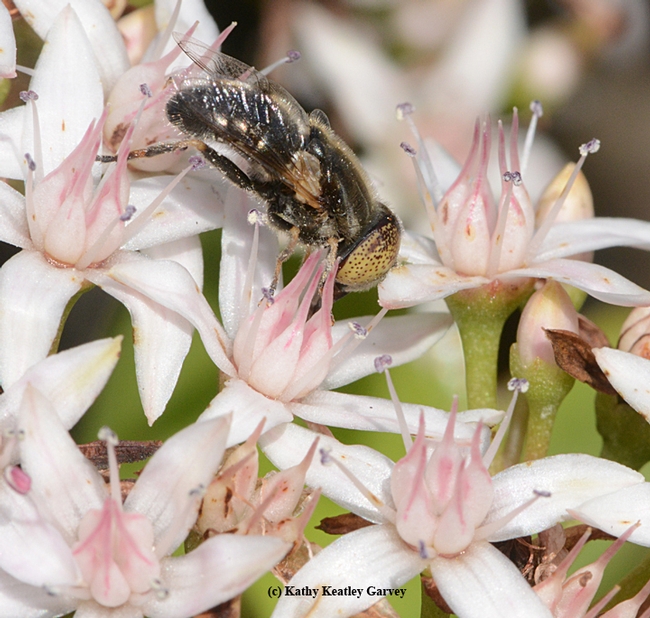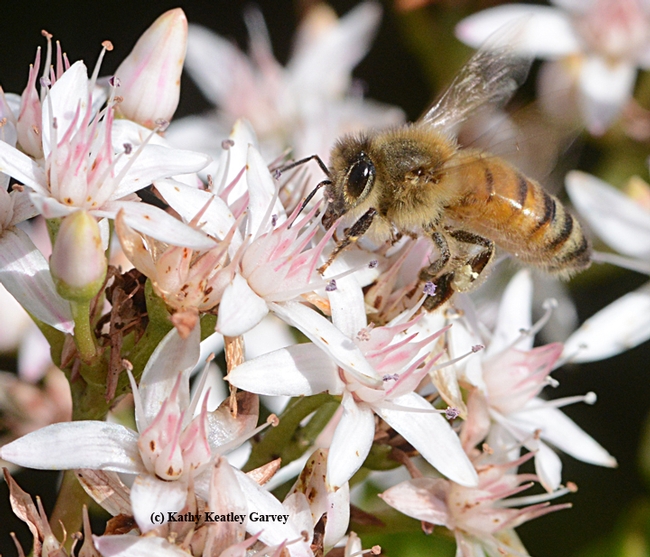It's not spring yet, but don't tell that to the pollinators at the Benicia Capitol State Historic Park.
We traveled to the state park on Monday, Jan. 25 to see if we could find a bumble bee foraging on the jade blossoms. Or more specifically, the black-tailed bumble bee, Bombus melanopygus. It's been out as early as December. We encountered Bombus melanopygus on Christmas Day, 2013.
Would we spot one again?
No.
But the jade was in full bloom and honey bees were all over it. So was another pollinator, a syrphid fly, identified by fly expert Martin Hauser of the California Department of Food and Agriculture as a Lathyrophthalmus aeneus or Eristalinus aenus--depending on whether you follow the European or U.S. nomenclature, he says. "It is an introduced rattail maggot syrphid (family Syrphidae) from Europe which overwinters as adult and is one of the first syrphids you can find here during the first warm days." Hauser is a senior insect biosystematist in the CDFA's Plant Pest Diagnostics Branch.
Check out the distinguishable dotted eyes! And see more photos of Eristalinus aenus on BugGuide.net.
Oh, an American bee and a European fly on the South African jade? No. Both species hail from Europe. European colonists brought the honey bee, Apis mellifera, to the Jamestown colony (what is now Virginia) in 1622. We're not sure about the fly!
Attached Images:

